- Getting around Lijiang. Dont stay in the Old Towns more than 2 days, there is nothing to do. KRISS Oct 9, 2013 05:46
- 2013 Beijing Temple Fair BENNYLAU Feb 26, 2013 03:29
- Malaysian traveling from KUL - LAX vis Shanghai PVG ZATI_DY Jan 3, 2013 20:15
The Hanging Monastery & The Taoist Mountain
- Views: 27656
- |Vote: 1 1
- |Add to Favorites
- |Recommend to Friends
The Canyon
60km outside the unprepossessing city of Datong, Shanxi Province, is a small town called Hunyuan. 5km outside Hunyuan the cliffs of the Jinlong (Golden Dragon) Canyon rise precipitously into a blue summer sky. Some 50m up their vertical white rock, suspended like some overgrown circus performer on wooden stilts, is, of all things, a monastery. Having endured over 1500 years of rain, snow, wind and sun, and in more modern decades the daily weight and tramp of visitors along its labyrinth of wooden steps and boardwalks, the Hanging Monastery represents a unique construction; a mixture of architectural daring and imagination. But why build a monastery halfway up a sheer cliff face?
The Golden Dragon
In the Northern Wei Dynasty period of Chinese history, Datong was the capital city and the nearby Wutai (Five Terrace) mountain was a famous Buddhist site. Pilgrims came from near and far to worship at the mountain, usually making the journey from Datong in the north and passing Golden Dragon Canyon on their way. Logistically then, it made sense to build a monastery there, where passing pilgrims could rest and pay their respects. The only problem being that, at that time, the Hunhe River flowed through the gorge, and this river was well known for being rather temperamental: a storm of any kind, winter or summer, was sure to be followed by massive flooding. And the reason for this flooding? The Golden Dragon who lived in the river.
So, the story goes, that when the monk Liaoran built the monastery in around 491AD, he built it far up the cliff face to avoid the flooding, and hoped that Buddha would provide some protection for the area against the capricious dragon’s watery whims.
The Hanging Monastery
Today, the problem of flooding has been eliminated, and the dragon forever tamed, not so much by divine intervention as by human progress: an enormous dam now controls the water flow.
Even if you have seen the photographs, coming face to face with the monastery is still a moment worth savouring. It sits ridiculously, perilously, snug with the sheer cliff face, and protected to some extent by the fact that the niche it has been built into is concave. Whilst its cliff-face position is what makes the construction seem death-defying, ironically, it is the surrounding ridges of rock that cushion the temple from the worst of the elements.
The slender wooden poles seem to be all that is propping the structure up, but the real work is being done within the rock. Horizontal holes were chiselled into the cliff, and strong wooden beams inserted into them; it is upon this invisible foundation that the monastery really sits. And it is some foundation, allowing for its length of over 150m, and the 40 different “rooms” contained in the complex.
As I enter the monastery, climbing the stone steps, I am reminded of Magritte’s “The Castle in the Pyrenees”, a painting of a castle carved on top of great lump of rock suspended, impossibly, over the ocean: the Hanging Monastery is similarly surreal. The painting and monastery alike question gravity and space, and that I’m actually treading the wooden boards of this creation makes it all the more dizzying.
In fact, the monastery is divided into 3 main sections, and the entrance is the most solid area, built with brick and stone, and opens out into a courtyard with twin bell and drum towers. Here also is the Sanguan Hall, where you can make offerings to the plain-faced Taoist deities. Further on, as I move through the maze of narrow wooden walkways and corridors, directed by signs through this one-way system, I reach the 2nd section, and Sansheng Hall. This hall is a sanctuary for Buddhists, and contains sitting Buddhas and their followers.
Whilst the wood feels sturdy enough beneath my feet, the views never fail to inspire a sense of the precariousness of my position. I feel exposed, especially as I climb higher, as though I might be blown out of this place by a stray gust of wind at any moment. Of course, it isn’t likely, as there is no wind, and the zigzag stairways are all sheltered by wooden balustrades… but still, those without a head for heights might find this a nerve-wracking walk. The 3rd, and highest section of the monastery, is perhaps the most surprising of all from a religious or philosophical point of view. For here is the Sanjiao Hall, where a statue of Sakyamuni is flanked by those of Confucius and Laozi; here, on the edge of a cliff, Confucianism, Taoism and Buddhism stand shoulder to shoulder.
A Place to Sleep
The Hanging Monastery lies at the foot of Hengshan, and if time permits, it’s definitely worth your time to explore this Taoist mountain, particularly if the monastery has whetted your appetite for cliff-edge temples. Taxi drivers will happily charge you too much money for the journey up the mountain, but at least mine takes me to a quiet, mid-mountain guest house where I can sleep the night.
The guest house is on the edge of a large car park, that during daylight hours plays host to tour buses, but when I arrive is already deserted. A restaurant, run by a friend of the owner of the house I’m staying in, serves me – and only me – dinner. I have a huge table-for-ten to myself, and splash out on a dish made with expensive Heng-mountain-grown mushrooms and a bottle of beer. It’s tasty fare, and I eat hungrily, feeling not a little alone surrounded by these 9 empty chairs, as night steals over the mountain.
The Five Sacred Taoist Mountains
There are many famous mountains in China, and a group of 5 are collected for their spiritual significance: the 5 Sacred Taoist Mountains. Heng Mountain is one of these 5 (the others being Mt Tai in the east, Mt Hua in the west, Mt Heng in the south, and Mt Song in the centre); Shanxi’s Heng Mountain is the northernmost, although it is often passed up by visitors in favour of the nearby Wutai Mountain (one of the 4 Sacred Buddhist Mountains). This strikes me as a shame, because exploring this mountain is really great fun, and it has everything from striking views, to a vast array of temples hidden amongst its slopes… and it is also, relatively speaking, quiet.
Unfortunately there is little information available about the history of Heng Mountain, but there are a few information signs in English dotted around, and if you can speak Chinese, the resident monks are usually happy to share some of their knowledge with you.
As with most mountains in China, you have a choice between climbing the ubiquitous stone steps, or taking a cable car. I take the steps, and though at its peak the mountain only just manages to break through the height of 2000m, there are still great views to be had, especially on a summer’s day. And if the mountain itself does not inspire you, then its towering position over the verdant green hills and terraces of the surrounding area surely will.
The Temples
There are plenty of temples, large and small, to be discovered here. Bedroom Palace is the oldest temple to be found on the mountain, and was originally constructed in 435AD. It is built into a circular niche in the rock known as Flying Stone Cave, and as such is a peaceful spot, with excellent views from the top of its stone-stepped entrance, wrapped in a sheltered canopy of rock, tree and sky. The temple contains a statue of the Great Northern Emperor.
Chunyang Temple houses a statue of the leader of the Taoist’s Eight Immortals, Lv Dongbin, a legendary figure with not a few vices, who loved women and drinking, and was notoriously bad tempered. Nearby stands the Nine Heavens Temple which is dedicated to the female master of the Yellow Emperor, known as the Mysterious Woman of the Nine Heavens.
The highest temple is called the Meeting Deity Palace, and is housed in a lofty niche of pale rock with two large pine trees towering over its main hall built back into the recesses of the cliff. The hall houses statues of three of the most important Taoist deities representing wealth, fortune and longevity. Needless to say, most visitors make it to this temple in the hope of being granted at least one of these precious gifts, and the resident Taoist is on hand to offer information (for free), and incense for a price.
The Taoist Mountain
On this summer’s day, the mountain is a perfect retreat from the heat, as its altitude takes a few degrees off the temperature. Even so, the sun is strong, and the numerous trees and temples provide welcome shade. The temples are diverse and alluring, set as they are into the various nooks and crannies of the many cliffs, some being large and furnished with bell and drum towers, others are tiny and secluded.
I am delighted by the maze of stone steps and pathways that proliferate into the rock- and tree-edged heart of this mountain, accompanied by the cicadas’ shrill and endless song of high summer. As the temples are arranged ascending the cliff, many are reached by steep stone staircases, one of which is presided over by a tunnel of trees that casts it into a riot of bright sunlight and dappled shade. Once again it is a painter that comes to my mind, for perhaps I am scaling one of the black and white illusions of Escher, although here amidst the bright greens and blues of leaf and sky, it feels as though I am climbing towards heaven.
The Taoist Monk
Many of the temples are looked after by Taoist monks or followers, who look the part with their faces gnarled as the bark of ancient trees, and their grey wispy beards. I speak to one such man who has been on the mountain for over 40 years. Each day he follows the same routine, climbing up to his temple, opening it up, cleaning it, chatting, thinking, watching the world pass by, and then as dusk approaches, he closes down the shutters, locks the gate, and heads back down again for home.
For a man in his sixties, he is hale and sprightly, and he spends a while explaining the complex hierarchy of Taoist deities to my eager, uninformed ears. I ask him of winter here too, and he extols the beauty of the snow, the occasional violence of the wind, and of the nights that start earlier and earlier. It’s a slow process, with patience required on both sides, as words and language and meanings hit and miss, but here amidst the quiet red stone walls and leafy canopies, it’s hard not to feel that we have all the time in the world…
Information (July 2009)
Getting There
From: Datong 大同 (Long Distance Bus Station)
To: Hunyuan 浑源
Price: ¥19
Times: Buses leave every 15 mins or so from 8am-6pm (and from Hunyuan back again from 6.45am-6pm)
It takes about 1.5 - 2hours.
Taxis also ply the route, but are obviously more expensive.
The Hanging Monastery 悬空寺
Ticket Price: ¥60
A little expensive perhaps, but it’s a unique site and worth seeing. I spent about an hour wandering and taking photos here. I also got a taxi here from the Hunyuan bus station, as I arrived late; it’s about 5km.
Heng Mountain 恒山
Entrance Price: ¥20 (this gets you onto the mountain, and is paid at the bottom)
Temple Area Price: ¥35 (this allows you access to all the temples, and is paid half-way up)
Cable car rides up and down are also extra, but I didn’t take this route.
Market stalls at the car park sell drinks, snacks and some souvenirs.
Accommodation
I stayed for one night at one of the guest houses next to the main car park. I bargained from ¥150 to ¥120 for a twin room, with a shower. I had dinner at one of the restaurants, ordered 2 dishes, including one of the speciality mountain-mushroom and a bottle of beer, which cost ¥98 in total.
I also had to rely on taxis to get up and down the mountain, and I’m sure I paid too much, but I had no other choice. Public buses seemed to be non-existent, and certainly the taxi drivers and the guest house owners were not about to tell me otherwise.




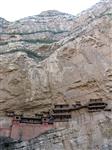
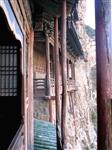
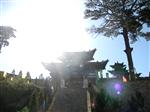
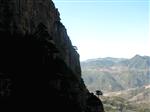
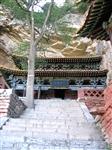
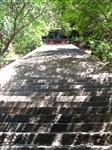


 Copyright © 1998-2026 All rights reserved.
Copyright © 1998-2026 All rights reserved.
1.
May 18, 2011 09:12 Reply
LEMONCACTUS said:
Thanks for the comment. An afternoon would be pushing it, but not impossible. However, if you're on a limited schedule and are seeing other mountain/temple retreats, you could opt to miss this one. :)
2.
May 2, 2011 00:24 Reply
EMILYMICHELLE said:
Sounds interesting! How long would you recommend for seeing Hengshan? If we only had an afternoon in which to visit, would it still be worth it?